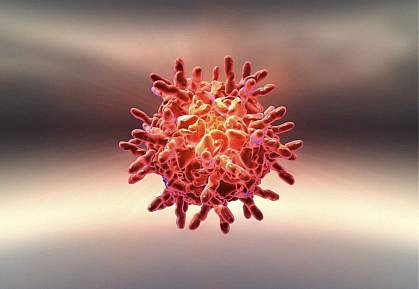What is Rhinovirus: Understanding the Common Cold Virus
Rhinovirus is a prevalent virus that is primarily known for causing the common cold. It is a member of the Picornaviridae family and is responsible for a significant number of upper respiratory infections worldwide. In this article, we will delve deep into what rhinovirus is, how it spreads, its symptoms, treatment options, and preventive measures.
What is Rhinovirus?
Rhinovirus is a virus that primarily infects the upper respiratory tract, leading to symptoms commonly associated with the common cold. It is characterized as a small, non-enveloped virus with a single-stranded RNA genome. Rhinovirus infections are most prevalent during the fall and spring seasons but can occur at any time of the year.
There are over 100 identified serotypes of rhinovirus, which makes it challenging for the immune system to develop long-lasting immunity against it. This variability is one reason why people can catch colds multiple times throughout their lives.
Characteristics of Rhinovirus
- Type: Picornavirus
- Genome: Single-stranded RNA
- Transmission: Primarily through respiratory droplets and contaminated surfaces
- Serotypes: More than 100, contributing to frequent infections
How Rhinovirus Spreads
Rhinovirus spreads easily from person to person, primarily through respiratory droplets. Understanding how this virus transmits is crucial in preventing infections.
Modes of Transmission
- Airborne Transmission: When an infected person coughs or sneezes, tiny droplets containing the virus can be inhaled by nearby individuals.
- Direct Contact: Touching surfaces or objects contaminated with rhinovirus, such as doorknobs, handrails, and mobile phones, can lead to infection if a person touches their face afterward.
- Close Contact: Close personal interactions, such as hugging or shaking hands with an infected person, can facilitate the spread of the virus.
Incubation Period
The incubation period for rhinovirus is typically 1 to 3 days. During this time, the virus replicates in the respiratory tract before symptoms appear.
Symptoms of Rhinovirus Infection
The symptoms of a rhinovirus infection closely resemble those of the common cold. While most people recover without complications, the symptoms can be bothersome.
Common Symptoms
- Nasal Congestion: This is often one of the first signs, leading to difficulty breathing through the nose.
- Runny Nose: Increased mucus production may lead to a clear or cloudy nasal discharge.
- Sore Throat: Inflammation in the throat can cause discomfort and pain.
- Coughing: A persistent cough may develop as the body attempts to clear mucus from the airways.
- Sneezing: Frequent sneezing is common due to irritation in the nasal passages.
- Headache: Sinus pressure and congestion can lead to headaches.
- Fatigue: The body’s immune response can cause tiredness and a general feeling of malaise.
Less Common Symptoms
- Fever: While a mild fever may occur, it is less common in rhinovirus infections compared to other viral infections.
- Body Aches: Muscle soreness may accompany fatigue.
Diagnosis of Rhinovirus
Diagnosing a rhinovirus infection typically involves evaluating the patient’s symptoms and medical history.
Clinical Diagnosis
- Symptom Assessment: Healthcare providers will assess the presence of common cold symptoms.
- Physical Examination: A physical exam may include checking for nasal congestion, throat redness, and other symptoms.
Laboratory Testing
While most rhinovirus infections are diagnosed clinically, laboratory tests can confirm the presence of the virus, especially in severe cases or immunocompromised patients.
- Nasal Swabs: Samples may be collected from the nasal passages to test for the virus.
- PCR Testing: Polymerase chain reaction (PCR) tests can detect the genetic material of rhinovirus, providing a definitive diagnosis.
Treatment Options for Rhinovirus Infection
There is currently no specific antiviral treatment for rhinovirus infections. Most treatment focuses on alleviating symptoms and supporting recovery.
Symptomatic Relief
- Rest: Adequate rest is essential for recovery. It allows the body to heal and fight off the virus.
- Hydration: Drinking plenty of fluids helps prevent dehydration and keeps the throat moist.
- Over-the-Counter Medications:
- Decongestants: These can help relieve nasal congestion and improve breathing.
- Antihistamines: These may reduce sneezing and runny nose.
- Pain Relievers: Acetaminophen or ibuprofen can alleviate headaches and body aches.
- Steam Inhalation: Breathing in steam from hot water can help soothe irritated nasal passages and relieve congestion.
- Saltwater Gargle: Gargling with warm salt water can help ease a sore throat.
When to Seek Medical Attention
While rhinovirus infections typically resolve on their own, individuals should seek medical care if they experience:
- Severe or persistent symptoms
- Difficulty breathing
- Chest pain or tightness
- High fever
Preventing Rhinovirus Infections
Preventing rhinovirus infections is essential, especially during cold season. Here are effective measures to reduce the risk of infection:
Hygiene Practices
- Handwashing: Regular handwashing with soap and water for at least 20 seconds is one of the most effective ways to prevent the spread of viruses. If soap is not available, an alcohol-based hand sanitizer can be used.
- Avoiding Touching Face: Minimizing contact with the face, particularly the eyes, nose, and mouth, can help prevent the virus from entering the body.
- Covering Mouth and Nose: Coughing or sneezing into a tissue or the elbow helps prevent the spread of droplets.
Environmental Measures
- Cleaning and Disinfecting: Regularly cleaning surfaces, especially high-touch areas, can reduce the risk of contamination.
- Avoiding Crowded Places: During peak cold seasons, limiting exposure to crowded areas can lower the chances of encountering infected individuals.
Vaccination
Currently, no vaccine specifically targets rhinovirus, but maintaining overall health through vaccinations for other respiratory viruses, such as influenza, can provide some level of protection.
Rhinovirus and Its Impact on Health
Rhinovirus infections are generally mild, but they can lead to more severe complications in certain populations, particularly those with weakened immune systems or preexisting respiratory conditions.
At-Risk Groups
- Children: Young children are more susceptible to rhinovirus due to their developing immune systems.
- Older Adults: Aging can weaken the immune response, making older adults more vulnerable to infections.
- Individuals with Asthma or COPD: Those with chronic respiratory conditions are at higher risk for exacerbations during rhinovirus infections.
- Immunocompromised Individuals: People with weakened immune systems due to diseases or treatments may experience more severe symptoms.
Complications
While rare, rhinovirus infections can lead to complications such as:
- Bronchitis: Inflammation of the bronchial tubes may occur, leading to coughing and difficulty breathing.
- Pneumonia: In some cases, rhinovirus can trigger pneumonia, particularly in at-risk individuals.
Conclusion
In summary, rhinovirus is a common cause of upper respiratory infections, primarily known for causing the common cold. Understanding what rhinovirus is, how it spreads, and its symptoms is essential for managing and preventing infections. While there is no specific treatment for rhinovirus, symptomatic relief and preventive measures can significantly impact health and well-being. By practicing good hygiene and taking necessary precautions, individuals can reduce their risk of rhinovirus infections and maintain their overall health.

